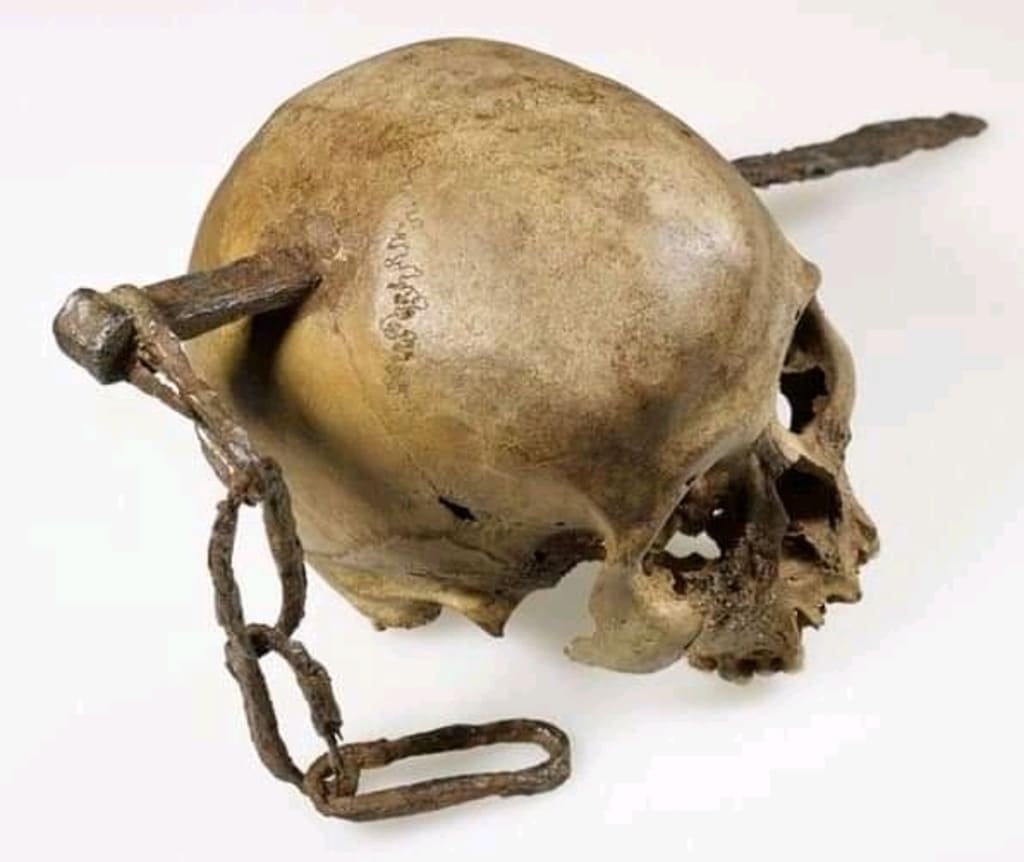
Archaeological discoveries have always been fascinating to human beings as they provide us with valuable insights into the past. Recently, an interesting Roman-era discovery has come to light, that is a skull impaled with a large spike. This fascinating discovery is currently on display at the Rheinischen Landesmuseum in Bonn, Germany. The discovery has attracted a lot of attention and curiosity from people worldwide. In this article, we will explore the history and significance of this discovery.
Discovery:
The discovery of the skull impaled with a large spike dates back to the Roman era, around the 1st or 2nd century AD. The skull was found in a cemetery near the ancient Roman city of Bonn, which was known as "Bonna" in Roman times. The cemetery was discovered during excavations carried out in the 1980s and 1990s, and it contained the remains of over 250 individuals.
The skull was found in a separate burial pit, away from the other graves. The pit was small, and it contained only the skull, which was impaled with a large iron spike. The spike had been driven through the skull from the back and protruded out of the mouth.
The discovery of the skull impaled with a spike was initially thought to be an execution, as it was a common practice during the Roman era to execute criminals in this way. However, further investigation revealed that the individual was not a criminal but rather a soldier.
Forensic Analysis:
Forensic analysis of the skull revealed that the individual was a young man, around 25-30 years old. He was in good health at the time of his death, and there were no signs of disease or injury on his bones. The spike was found to be 22 centimeters long and 2.5 centimeters in diameter, and it had been driven through the skull with great force.
The position of the spike suggested that the individual had been impaled from behind, possibly with his hands tied. The spike had entered the skull from the back and passed through the brain, causing instant death.
The forensic analysis also revealed that the individual had suffered from a dental abscess, which would have caused him a great deal of pain. The abscess had not been treated, and it is possible that it may have contributed to his death.
Significance:
The discovery of the skull impaled with a spike is significant for several reasons. Firstly, it provides us with valuable insights into the lives of people during the Roman era. The fact that the individual was a soldier suggests that he was part of the Roman military presence in the area. The spike may have been used as a punishment for desertion or other military offenses.
Secondly, the discovery highlights the brutality of the Roman era, and the harsh punishments that were inflicted on those who disobeyed the law. Impalement was a common punishment during the Roman era, and it was used for a variety of offenses, including treason, murder, and desertion.
Thirdly, the discovery challenges our perceptions of the Roman era as a time of sophistication and enlightenment. The Roman Empire was known for its advancements in architecture, engineering, and philosophy, but it was also a time of great violence and cruelty.
Conclusion:
In conclusion, the discovery of the skull impaled with a spike is a fascinating and significant archaeological find. It provides us with valuable insights into the lives of people during the Roman era and highlights the brutality of the time. The discovery challenges our perceptions of the Roman era as a time of sophistication and enlightenment and reminds us of the harsh realities of life in the ancient world. The skull is currently on display at the Rheinischen Landesmuseum in Bonn, Germany, and it is sure to continue to attract attention and curiosity from people worldwide.
About the Creator
Arish Ali
The world is yours!





Comments
There are no comments for this story
Be the first to respond and start the conversation.